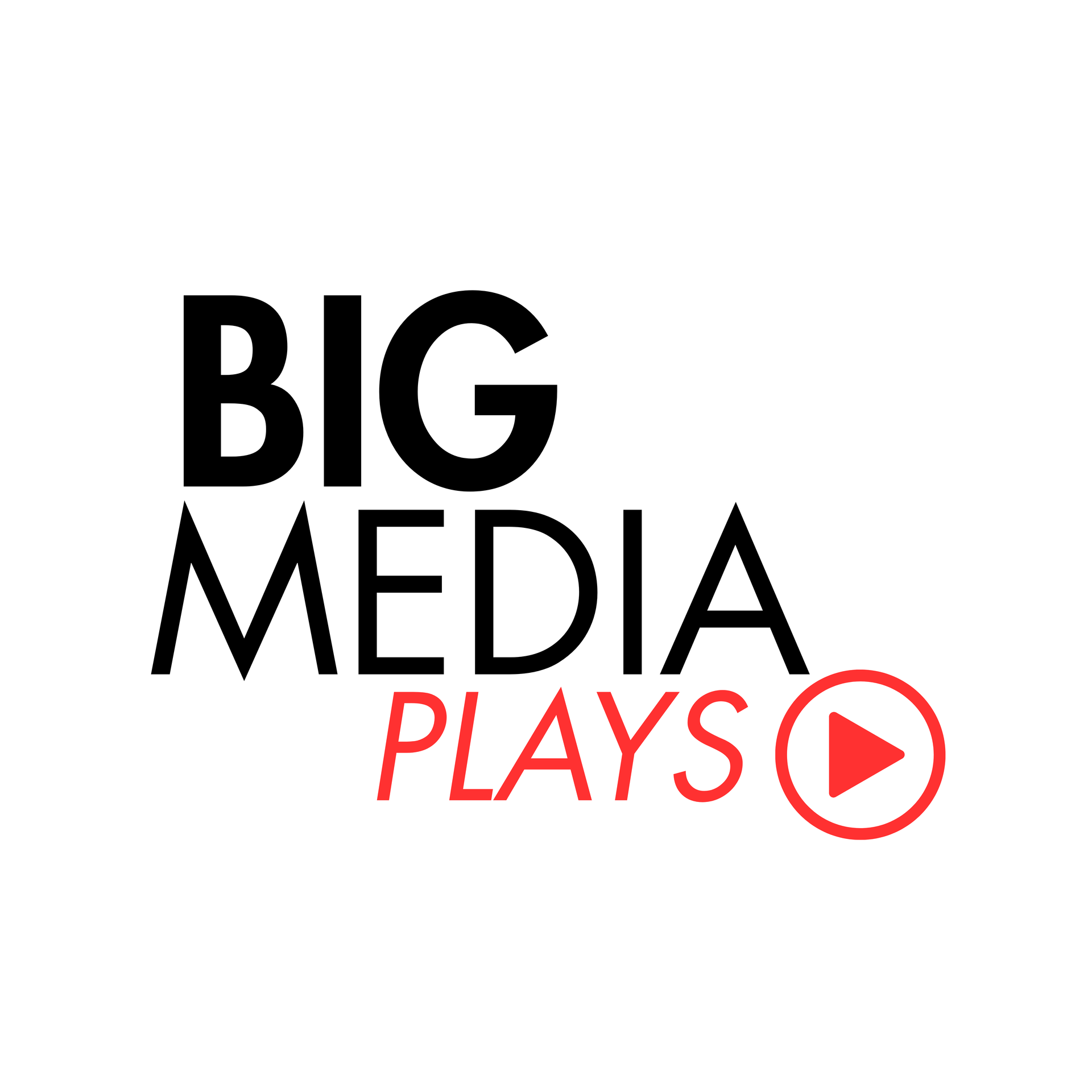Decoding Customer Lifetime Value (CLV) for Smart Business Growth
Lisbet Newton • September 17, 2025
Decoding Customer Lifetime Value (CLV) for Smart Business Growth
In the fast-paced world of business, it’s easy to get caught up in the immediate thrill of a new sale. We celebrate the conversion, track our monthly revenue, and constantly seek out fresh leads. But what if we told you that focusing solely on the next transaction might be causing you to overlook an enormous, untapped gold mine right within your existing customer base? Enter Customer Lifetime Value (CLV)
– a metric that transcends the single purchase and reveals the total revenue a business can reasonably expect from a single customer throughout their relationship.
At Big Media Plays, we believe that understanding and optimizing your CLV is not just a strategic advantage; it’s a fundamental shift in how you view your customers, your marketing spend, and your long-term profitability. Whether you sell high-value luxury items or provide essential, recurring services, grasping CLV empowers you to make smarter decisions, foster deeper relationships, and build a truly sustainable business. Let’s pull back the curtain on this vital formula and explore how different businesses leverage its power.
What is Customer Lifetime Value (CLV) and Why Does It Matter?
At its core, Customer Lifetime Value is a prediction of the net profit attributed to the entire future relationship with a customer. Instead of just asking, "How much did this customer spend today?" CLV asks, "How much will this customer spend with us over their entire engagement?"
The basic, simplified formula for CLV is: CLV = (Average Purchase Value) x (Purchase Frequency) x (Customer Lifespan)
Average Purchase Value: The average amount a customer spends per transaction.
Purchase Frequency: How often, on average, a customer makes a purchase from your business within a specific period (e.g., per year).
Customer Lifespan: The average length of time a customer remains an active, paying client.
Why is this so important?
- Informed Marketing Spend: Knowing a customer’s potential lifetime value allows you to justify higher customer acquisition costs (CAC) if you know they’ll be profitable in the long run.
- Improved Retention Strategies: When you know the value of retaining a customer, you're more likely to invest in loyalty programs, exceptional service, and personalized communication.
- Enhanced Profitability: It's generally cheaper to retain an existing customer than to acquire a new one. A higher CLV directly translates to increased profitability.
- Better Business Decisions: CLV helps prioritize customer segments, optimize product development, and refine overall business strategy.
CLV in Action: Two Contrasting Scenarios
To truly appreciate the versatility of CLV, let’s examine how two very different types of businesses – a high-value, infrequent purchase model (like a pool builder) and a low-value, high-frequency model (like a pest control company) – interpret and apply this formula.
Scenario 1: The High-Value, Infrequent Purchase – The Pool Builder Company
Imagine a luxury pool builder. Their service involves a significant investment, often ranging from tens of thousands to hundreds of thousands of dollars. A customer might only build one or two pools in their entire lifetime.
Average Purchase Value: Extremely high. The initial pool construction is a massive one-time cost.
Purchase Frequency: Very low. It's rare for a customer to build multiple pools with the same company.
Customer Lifespan: While direct construction might be a single event, the relationship lifespan can be quite long. This includes potential future maintenance contracts, upgrades (e.g., adding smart features, landscaping, outdoor kitchens), or, crucially, referrals to friends and family.
How a Pool Builder Evaluates CLV:
For a pool builder, the CLV calculation isn't just about the immediate sale. They understand that the upfront value is high, but the long-term relationship holds immense potential.
Referral Value: A delighted pool owner becomes a powerful advocate. Their referrals are priceless, often leading to new high-value projects with minimal marketing cost. The CLV of a referrer is amplified by the CLV of those they refer.
Add-on Services: Post-construction, opportunities for pool maintenance, resurfacing, equipment upgrades, smart home integration, or even associated landscaping projects extend the "purchase frequency" and "average purchase value" over time.
Brand Reputation: Each successful, high-quality build reinforces their brand, attracting more high-value clients and potentially shortening the sales cycle for new customers.
For the pool builder, marketing efforts focus on demonstrating expertise, quality craftsmanship, exceptional customer service during the build, and nurturing relationships long after completion. The goal is to maximize the initial sale and then leverage that single, impactful experience into a long-term stream of maintenance, upgrades, and valuable referrals.
Scenario 2: The Low-Value, High-Frequency Purchase – The Pest Control Company
Now, consider a pest control company. Their services are often smaller, recurring payments – monthly, quarterly, or annually. The average cost per visit might be relatively modest.
Average Purchase Value: Relatively low per service visit.
Purchase Frequency: High and consistent, often on a subscription or recurring service model.
Customer Lifespan: Potentially very long. Customers often stick with a reliable pest control service for years, even decades, once they are satisfied.
How a Pest Control Company Evaluates CLV:
For a pest control company, the true value of a customer lies not in any single service visit, but in the cumulative sum of those visits over an extended period.
Recurring Revenue: The strength of their business model is built on consistent, predictable income streams. A customer paying $50/month for 10 years generates $6,000 in CLV – a significant amount that far surpasses the individual service fee.
Retention is King: Churn (customers leaving) is the biggest threat. They invest heavily in customer service, efficient scheduling, proactive communication, and effective treatments to ensure clients remain happy and continue their subscriptions.
Upselling/Cross-selling: While the core service is pest control, there are opportunities to upsell to more comprehensive plans (e.g., termite control, mosquito abatement) or cross-sell related services (e.g., insulation, attic remediation), increasing the average purchase value over time.
Efficiency and Scale: Since individual transaction values are lower, efficiency in operations and the ability to service a high volume of customers are critical to profitability.
For the pest control company, marketing focuses on acquiring new customers efficiently (as initial margins might be thin) and then relentlessly prioritizing customer satisfaction and retention. Every dollar spent on improving customer experience pays dividends in extending the customer lifespan and, consequently, their CLV.
Why CLV is Your Business's North Star
Whether you’re selling a one-time dream home addition or providing continuous peace of mind from pests, understanding Customer Lifetime Value
is indispensable. It shifts your perspective from transactional thinking to relationship-centric strategies. By calculating and continually optimizing your CLV, Big Media Plays can help you:
- Allocate your marketing budget more effectively.
- Design customer experiences that foster loyalty.
- Identify your most valuable customer segments.
- Ultimately, build a more resilient, profitable, and growth-oriented business.
- Don't just chase the next sale; cultivate the lifetime value. That's where true, sustainable growth lies.
Ready to uncover the true value of your customers and supercharge your growth strategy? Contact Big Media Plays today for a personalized consultation!

As a business owner, you’re constantly bombarded with marketing data. Clicks, impressions, reach, engagement rate, followers—the list is endless. While these numbers can feel important, they often function as "vanity metrics." They look good on a report but do little to tell you the one thing you actually need to know: Is my marketing spending making me money? Spending thousands on a campaign that generates a lot of likes but no new customers isn't a strategy; it's a liability. True growth comes from understanding the direct line between your marketing dollars and your bottom-line profit. It’s about moving from tracking activity to measuring real-world impact. This guide will walk you through a simple, powerful framework to do just that. We'll start with the essential funnel metrics your marketing partner should be providing, move to the ultimate ROI calculation that every CEO needs to know, and finally, introduce a pro-level concept called Cohort ROI that will change the way you view your investments forever. ## Step 1: The Foundation - Your Key Marketing Funnel Metrics Before you can measure profit, you need to understand the efficiency of your marketing funnel. These three metrics are the bedrock of any serious campaign. They tell the story of how effectively your spend is converted into tangible opportunities. Cost Per Lead (CPL) This is the most basic metric, showing what you pay for every single inquiry, regardless of quality. It’s your top-of-funnel cost. Calculation: Total Marketing Spend / Total Number of Leads Example: If you spend $20,000 and generate 100 leads, your CPL is $200. CPL= Total Number of Leads Total Marketing Spend = 100 $20,000 =$200 Cost Per Qualified Lead (CPQL) This is where the data gets smarter. A "lead" could be anyone—a competitor, a job seeker, or someone outside your service area. A "qualified lead" is someone who is a genuine potential customer. Filtering for this is crucial. Calculation: Total Marketing Spend / Number of Qualified Leads Example: If only 80 of those 100 leads are actual potential customers, your CPQL is $250. CPQL= Number of Qualified Leads Total Marketing Spend = 80 $20,000 =$250 Customer Acquisition Cost (CAC) This is the single most important marketing metric. It answers the ultimate question: What did it cost us to get a new paying customer? This is the number that connects your marketing department directly to your sales board. Calculation: Total Marketing Spend / Number of New Customers Acquired Example: If those 80 qualified leads result in 10 signed contracts, your CAC is $2,000 per customer. CAC= Number of New Customers Acquired Total Marketing Spend = 10 $20,000 =$2,000 With these three numbers, you've already moved past 90% of the vanity metrics and have a clear view of your marketing engine's efficiency. But CAC only tells you the cost. Now, let's determine if that cost was worth it. ## Step 2: The Ultimate Scorecard - Connecting Marketing to Business Profit Knowing it costs $2,000 to acquire a new customer is only half the story. If that customer only brings in $1,000 of profit, you have a failing strategy. If they bring in $7,000, you have a growth machine. This is where you translate your CAC into a true, undeniable Return on Investment (ROI). Let's continue with our example, imagining we are a Houston-based roofing company that spent $20,000 on marketing to acquire 10 new roof replacement jobs. Calculate Total Revenue Generated Take the number of customers you acquired and multiply it by your average transaction value. Example: 10 Jobs Acquired * $20,000 Average Job Value = $200,000 in Revenue Calculate Gross Profit from that Revenue Revenue isn't profit. You must subtract your Cost of Goods Sold (COGS)—for a roofer, that’s materials, labor, etc. A typical gross profit margin in this industry is 30-40%. Example: $200,000 Revenue * 35% Gross Margin = $70,000 in Gross Profit Calculate Net Return on Marketing Spend Now, simply subtract the original marketing investment from the gross profit to find your net gain. Example: $70,000 Gross Profit - $20,000 Marketing Spend = $50,000 Net Return Calculate the Final ROI Percentage This is the number that belongs on the boardroom whiteboard. It tells you exactly how much you earned for every dollar you spent. Calculation: (Net Return / Marketing Spend) * 100 Example: ($50,000 / $20,000) * 100 = 250% ROI A 250% ROI is a clear, unambiguous win. It tells you that for every $1 you gave to the marketing campaign, you got $2.50 back in pure profit. This is the language of business growth. ## The Pro-Level Strategy: Understanding Cohort ROI The 250% ROI calculation is powerful, but it's still just a snapshot in time. It measures the immediate return from a campaign but misses the critical long-term value of the customers you acquired. This is where the concept of Cohort ROI comes in. A "cohort" is simply a group of customers acquired during the same period from the same marketing effort. In our example, the 10 roof replacement jobs acquired in September would be our "September Marketing Cohort." Instead of just measuring their initial value, Cohort ROI tracks the total profit that specific group of customers generates over a longer period—three months, six months, or even a year. Why does this matter? Referrals: What if one of those 10 happy customers refers their neighbor in December? That new job's profit is a direct result of the initial September marketing spend. Upsells & Repeat Business: What if another customer from the cohort hires you for a gutter cleaning service in the spring? That additional profit should be credited back to the campaign that originally won them over. Let's see how this changes the math for our roofer: Month 1 (Initial ROI): The September cohort generated $70,000 in gross profit. The ROI is 250%. Months 2-12 (Cohort Tracking): Over the next year, that same group of 10 customers generates an additional $10,000 in gross profit through one referral and a few small repair jobs. New Total Gross Profit: $70,000 (Initial) + $10,000 (Long-Term) = $80,000 Now, let's recalculate the ROI for the September Cohort with this new data: New Net Return: $80,000 Gross Profit - $20,000 Marketing Spend = $60,000 New Cohort ROI: ($60,000 / $20,000) * 100 = 300% ROI By tracking performance over time, you realize the marketing campaign was even more successful than you initially thought. This approach provides a far more accurate picture of which marketing channels are bringing in not just customers, but high-value, long-term clients. ## Know Your Numbers, Own Your Growth Moving your focus from vanity metrics to profit-driven KPIs is the most important strategic shift you can make. Master your CPL, CPQL, and CAC to understand efficiency. Insist on calculating true, profit-based ROI to measure success. And finally, adopt Cohort ROI to reward and scale the channels that deliver sustainable, long-term value. At Big Media Plays, we don't build campaigns around clicks and impressions. We build them around your bottom line. We focus on the metrics that matter, so you can focus on what you do best: running your business.


